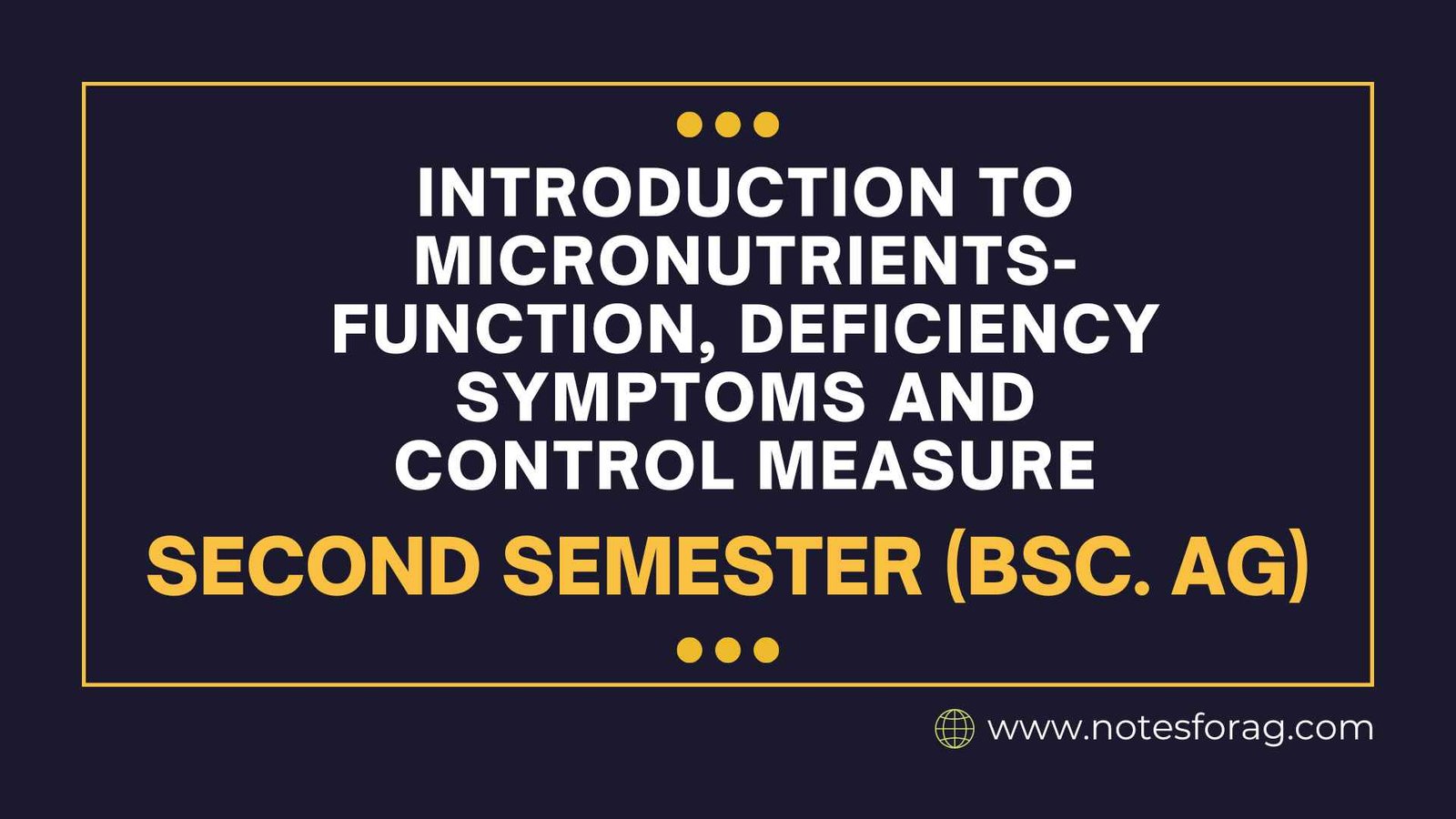Micronutrients are necessary substances that plants need in trace amounts, but they are vital to many physiological functions. Key micronutrients required for plant growth and development include iron, manganese, zinc, copper, molybdenum, boron, chlorine, and nickel. Every nutrient has a distinct purpose; iron is needed to synthesize chlorophyll, whereas zinc facilitates the activation of enzymes. Plant health and productivity can be negatively impacted by deficiencies in these micronutrients, which can cause specific symptoms like chlorosis, stunted growth, and leaf necrosis. To ensure optimal nutrient availability for healthy plant growth, effective management strategies include crop rotation, targeted fertilization, foliar sprays, soil testing, and pH control.
Table of Contents
Understanding Micronutrients in Plants
Micronutrients are essential for plants to grow and develop to their full potential even though they are needed in very small amounts. Many physiological and biochemical processes that are critical to the health of plants are made possible by these necessary components. Micronutrients are just as important to the health of plants as macronutrients, but macronutrients are required in greater quantities.

The iron (Fe), manganese (Mn), zinc (Zn), copper (Cu), molybdenum (Mo), boron (B), and chlorine (Cl) micronutrients are the main ones that plants demand. Plant metabolism and overall growth are influenced by each of these components in a different way. In order to synthesize chlorophyll and subsequently carry out photosynthesis, for example, iron is essential. The breakdown of carbohydrates and the metabolism of nitrogen both require manganese as a cofactor for several different enzymes. Plant hormones called auxins, which control growth and development, are made possible only by zinc synthesis.
Functions of Key Micronutrients
Although they are needed in smaller amounts than macronutrients, micronutrients are essential to the general health and growth of plants. Every vital micronutrient contributes to different physiological and biochemical processes during plant development. It is possible to ensure ideal plant health and productivity by being aware of these roles.
- Iron (Fe): An essential component of many enzymes involved in photosynthesis and respiration, iron is also necessary for the synthesis of chlorophyll.
- Manganese (Mn): Essential for photosynthesis, respiration, and the assimilation of nitrogen, manganese activates enzymes involved in the synthesis of organic acids.
- Zinc (Zn): Zinc is essential for the production of proteins, the synthesis of plant hormones, and the control of gene expression.
- Copper (Cu): Photosynthesis, respiration, and the synthesis of lignin—which fortifies plant cell walls—all depend on copper.
- Molybdenum (Mo): Nitrate reduction and nitrogen fixation depend on molybdenum.
- Boron (B): Boron plays a role in the development of cell walls, membrane integrity, and reproduction.
- Chlorine (Cl): Chlorine helps with photosynthesis and is essential for osmosis and ionic balance.
Deficiency Symptoms
Micronutrient deficiencies in plants manifest through a range of visual symptoms, each indicative of specific nutrient shortages. Recognizing these symptoms is critical for diagnosing and addressing the underlying deficiencies promptly.
- Iron Deficiency: Often beginning between the veins, this deficiency causes young leaves to chlorosis, or yellow.
- Manganese Deficiency: Causes dark green veins on young leaves, interveinal chlorosis, and may result in necrotic spots.
- Zinc Deficiency: Causes older leaves to have interveinal chlorosis, shortened internodes, and stunted growth.
- Copper Deficiency: This results in young leaves that are twisted and dark green, sometimes wilting and necrosis.
- Deficiency in molybdenum: It causes deformed leaves, leaf margin necrosis, and general chlorosis.
- Boron Deficiency: Leads to poor fruit and seed development, brittle leaves, and stem and root tip death.
- Deficiency in Chlorine: Causes wilting, chlorosis, and decreased growth of roots and leaves.
- Nickel Deficiency: Leads to decreased viability of seeds, impaired nitrogen metabolism, and necrosis of the leaf tips.
Control Measures
To effectively manage and prevent micronutrient deficiencies in plants, a comprehensive approach involving soil amendments, foliar sprays, and chelated micronutrients is essential.
- Soil Testing and Diagnosis: To track micronutrient levels and spot deficiencies early, routine soil and plant tissue testing is recommended.
- Micronutrient Fertilizers: To address deficiencies, particular micronutrient fertilizers, such as chelated forms, are applied.
- Foliar Sprays: When micronutrients are applied foliarly, deficiencies can be quickly corrected, particularly when soil availability is low.
- Organic Amendments: By improving soil structure and microbial activity, the use of organic matter, such as compost and manure, can increase micronutrient availability.
- pH management: While extreme pH levels can restrict nutrient uptake, maintaining an ideal soil pH can increase the availability of micronutrients.
- Crop Rotation and Diversity: You can stop micronutrient depletion and enhance soil health by implementing crop rotations and varying the types of plants you grow.
Sustainable farming methods, increased yields, and robust plant growth are all ensured by efficient micronutrient management. Farmers and gardeners can maintain optimal plant nutrition by making informed decisions based on their knowledge of the distinct roles, symptoms of deficiencies, and control strategies associated with particular micronutrients.
Even though they are required in trace amounts, micronutrients such as iron, manganese, zinc, copper, molybdenum, boron, chlorine, and nickel are vital for plant growth. They are essential for the processes of nitrogen metabolism, photosynthesis, and enzyme activation. Plant health and yields can be severely impacted by deficiencies in these nutrients, which can manifest as symptoms like chlorosis, stunted growth, and necrosis. In order to maintain ideal nutrient levels and guarantee robust plant development, effective control measures include conducting soil and tissue testing, applying targeted micronutrient fertilizers, utilizing foliar sprays, controlling soil pH, and engaging in crop rotation.
Frequently Asked Question(FAQ)
What are micronutrients in plants?
Micronutrients are necessary substances that plants need in trace amounts, but they are vital to many physiological functions. Among them are nickel (Ni), boron (B), copper (Cl), manganese (Mn), zinc (Zn), iron (Fe), molybdenum (Mo), and zinc (Zn).
Why are micronutrients important for plants?
Micronutrients are essential for many processes in plants, such as nitrogen metabolism, hormone regulation, enzyme activation, and photosynthesis. They support plants’ general growth, development, and productivity.
Related Articles

